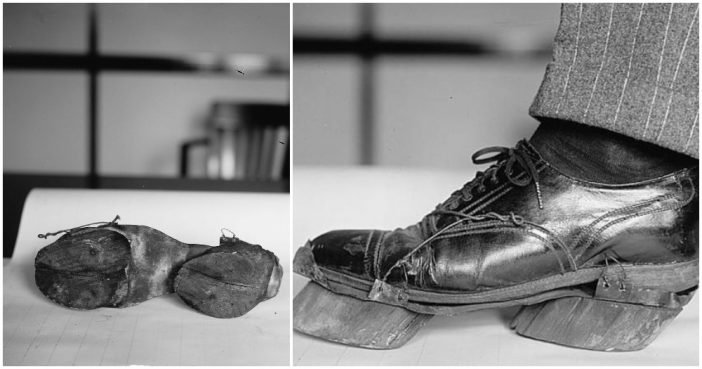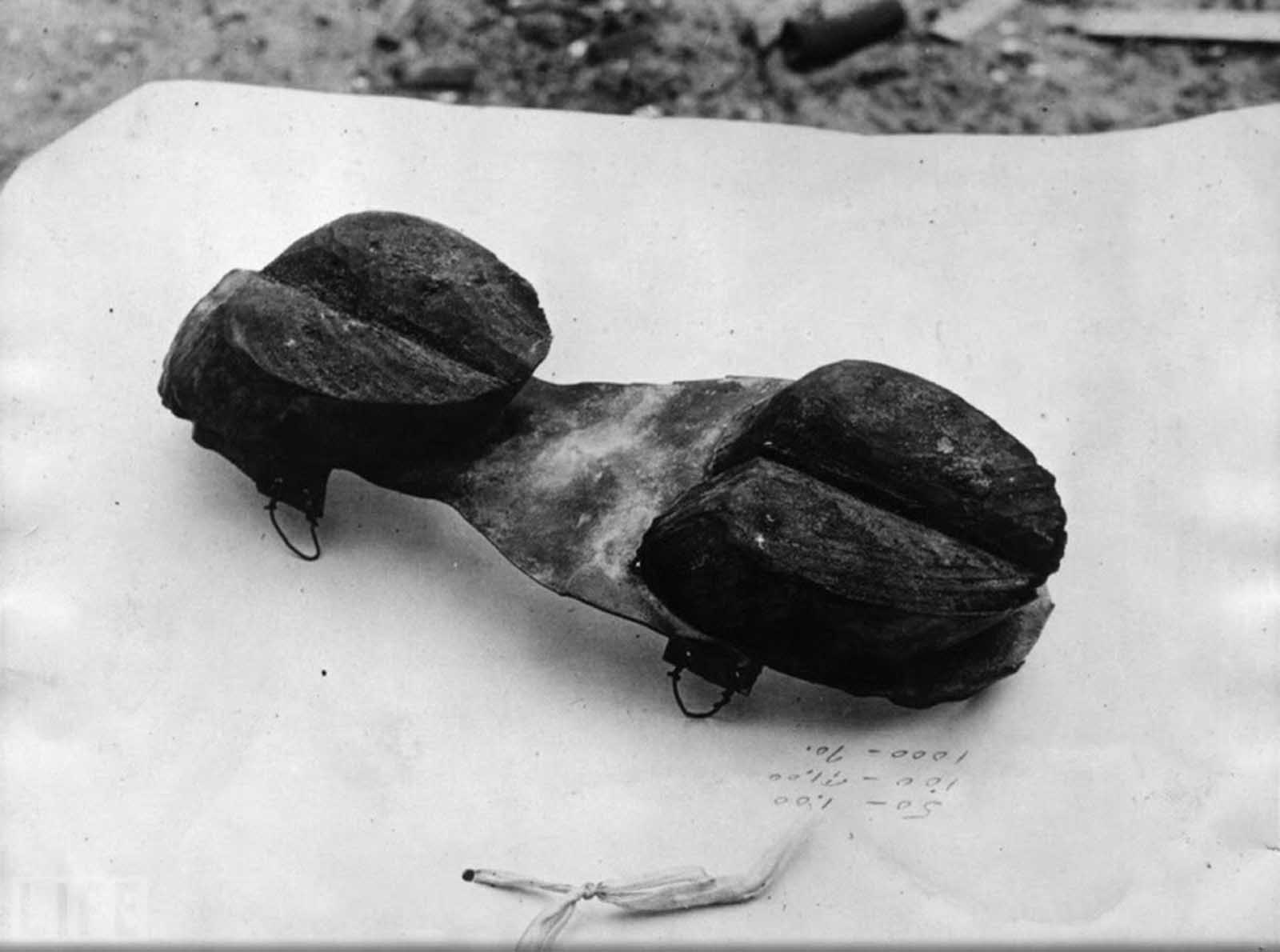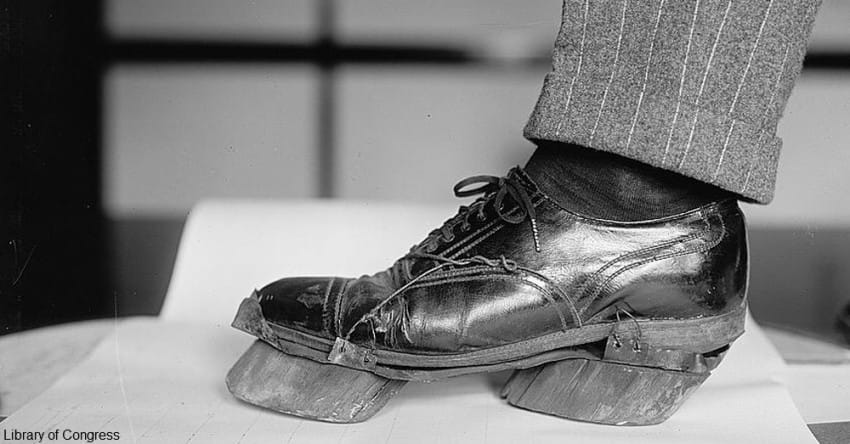
The Moonshine Man of Kentucky, an illustration from Harper’s Weekly, 1877, showing five scenes from the life of a Kentucky moonshiner.

The cow shoe is actually a metal strip tacked with a wooden block, which is carved to look like the hoof of a cow, and strapped to a human foot. One example of the shoe was found near Port Tampa and sent to the prohibition department in Washington, thus the authorities learned about the existence of this smart invention.

The same undercover gadget was described in an article in a Florida newspaper in 1922, so the world found out about the cunning of the moonshiners. The discovery of the cow shoes by the police did not mean an end to Prohibition.
The Prohibition had the opposite effect than the one planned. With its introduction, the crime rate increased by 24%, homicides by 12.7 % and drug addiction by 44.6% – the prohibition law actually brought more bad news than good. With organized crime and the black market flourishing, the bootlegging of alcohol became a very profitable business.

One desperate attempt of the government to stop the people from drinking was the deliberate poisoning of industrial alcohol, which led to the deaths of more than 10,000 people during the Prohibition era.
The era came to an end on 5 December 1933, when the Twenty-first Amendment was ratified, repealing the Eighteenth Amendment which enforced the Prohibition. The damage was, however, already done and the effects were unstoppable. With the wealth gained from the illegal alcohol trade, the Prohibition established the basis for organized crime to develop and grow in the following decades.
Credits: thevintagenews.com
